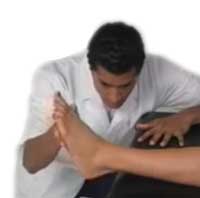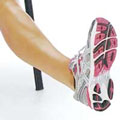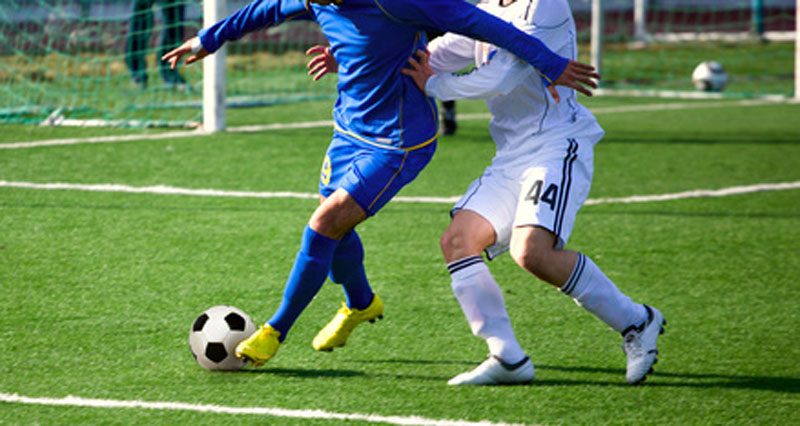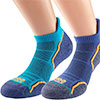Training with Sever’s disease means listening to your body. Here we explain how best to prioritise and manage your training to get the most out of it. If you have Sever’s disease then you will grow out of it. However, it is very important you manage your training and exercises until you do.
Managing training schedules with Sever’s disease
- The aim of treating and managing Sever’s disease is to gradually increase the load going through the tendon at a rate at which it can cope.
- When normal daily activities can be done pain-free, training can be resumed. However, you may need to modify the type of exercise you do, to avoid, or at least reduce activities which increase pain.
What makes Sever’s disease worse?
Any sport or training activity which places high loads through your Achilles tendon is likely to exacerbate your injury. This is likely to include:
- Running
- Jumping
- Playing football/Soccer,
- Any sports which involve weight-bearing, high-impact, explosive activities.
Do I have to stop playing/training?
It may be necessary to stick to swimming or cycling until the injury has completely cleared up. However, if changing your sport does not appeal, then this is what you can do:
Be selective
- Try to be more selective with training sessions.
- For example, a young footballer might take part in some of the high-quality technical practices, or team sessions, but avoid some of the fitness-related activities and substitute them for swimming or cycling.
- It is not ideal, but the main aim is to keep a player in a normal training routine as much as possible, whilst avoiding activities which increase heel pain.
- If this means training or playing just once a week and doing other non-weight-bearing activities for the rest of the week then so be it.
Monitor your symptoms
- Keep a training diary. Make a note of all your training sessions and make daily notes on how bad your heel pain is.
- This should help you identify what makes it worse and how best to manage your training with Sever’s disease. You can keep a record of how much you can do before your heel becomes painful.
- Aim to build up slowly over many weeks without pain, rather than have a week on then two weeks off resting.
- This is also excellent information for your physio/doctor if you see one.
Apply ice/cold after training
- Applying ice or cold therapy to the heel on a regular basis after training or exercise.
- Doing this even if it is not painful may help reduce or prevent pain and inflammation from developing.
What exercises should I do?
If pain allows gentle calf muscle stretching exercises should be done to maintain and improve flexibility. Assess your flexibility regularly (and add notes to your training diary).
Assessing flexibility

- One way to test if the calf muscles, the Gastrocnemius, in particular, are too tight is by gently pushing on the toes to stretch the calf muscles.
- The foot should go to 90 degrees without having to force it or apply great pressure.
- If the foot does not go to 90 degrees this may indicate tight muscles.
- repeat with your knee bent to test the deeper Soleus muscle.
Training with Sever’s disease – Stretching exercises
Managing your training with Sever’s disease means listening to your body. Gentle stretching is OK. But if it is painful, or makes your heel pain worse then give it a miss until you are pain-free.
Here are two stretches that are important when stretching the calf muscles. The first one is done with the leg kept straight which stretches the Gastrocnemius muscle, and the other is with the knee bent to stretch the Soleus muscle.
Active stretching

- Active will be the safest to use in the early stages of rehabilitation.
- It involves the patient pulling the foot and toes up gently to stretch the muscles at the back of the leg.
- Hold for 8 seconds, repeat 5 times.
- Repeat the stretch throughout the day if pain allows.
Calf muscle stretches
- Gastrocnemius stretch – keep the heel of the back leg on the ground and gently push forward. If it is painful do not do it.
- This will stretch the larger Gastrocnemius muscle which originates above the knee joint.
- Hold for 10 seconds and repeat 3 times. Some therapists will recommend holding stretches for longer periods of up to 45 seconds.
- Repeat stretches with your knee bent to stretch the Soleus muscle.
- Remember that stretching is a long-term process.
References & further reading:
- Google Scholar – Sever’s disease
- Ogden JA, Ganey TM, Hill JD et al. Sever’s injury: a stress fracture of the immature calcaneal metaphysis. J Pediatr Orthop 2004;24:488-93
- Ramponi DR, Baker C. Sever’s Disease (Calcaneal Apophysitis) Adv Emerg Nurs J. 2019 Jan/Mar;41(1):10-14










